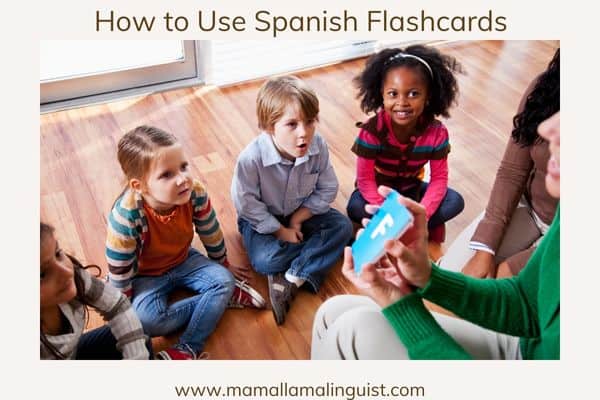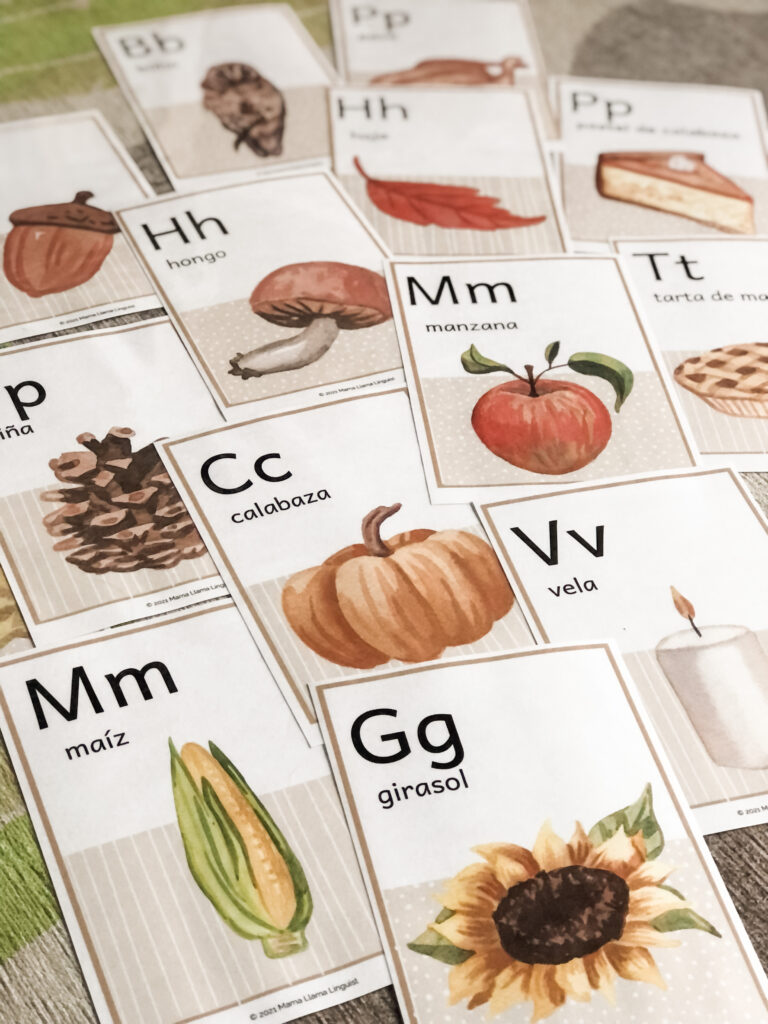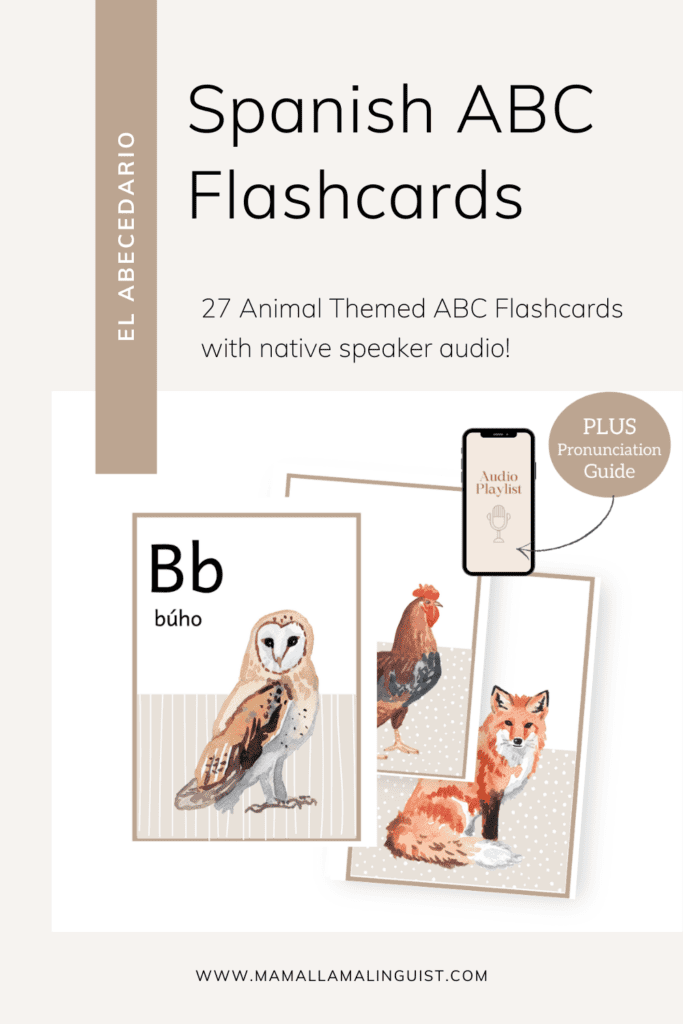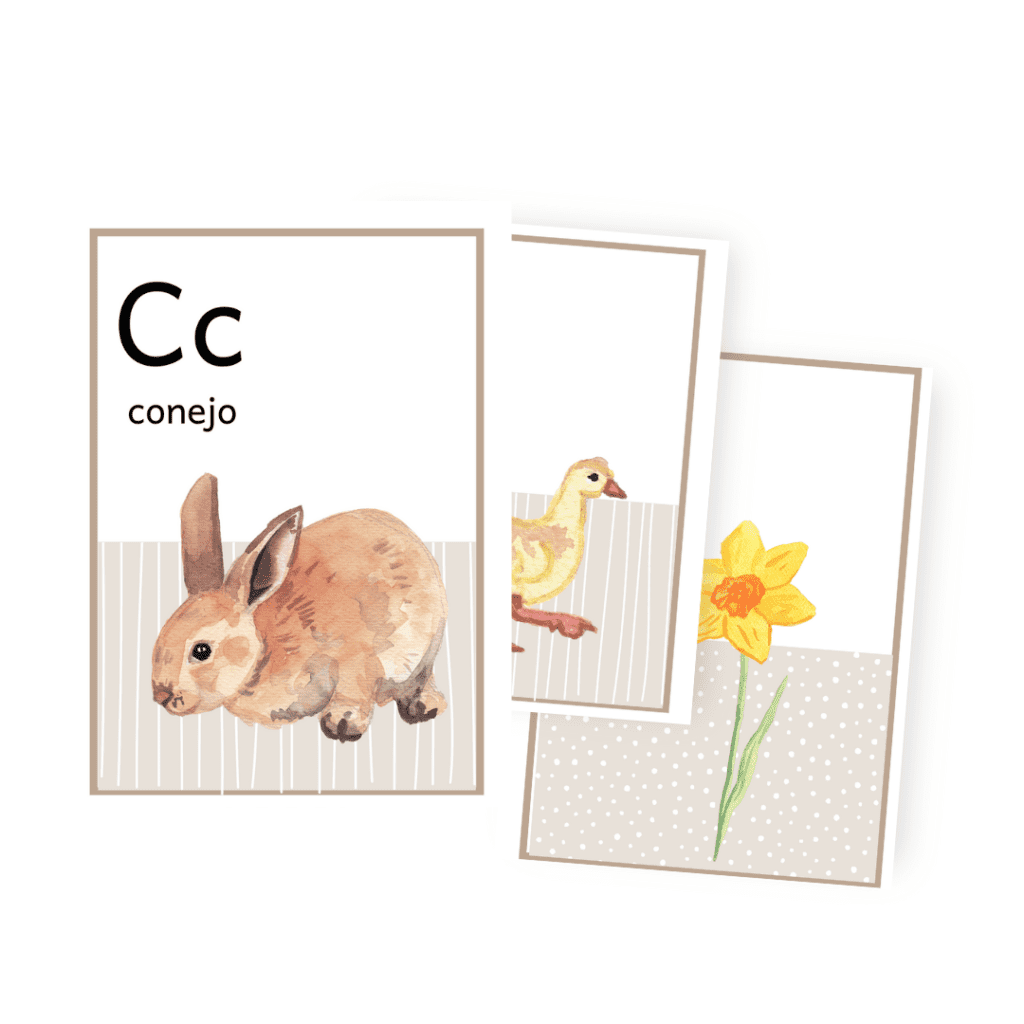In this post: Learn all the ways you can use Spanish flashcards to make language learning fun and interactive.
When it comes to learning, it’s safe to say that flashcards are one of the simplest yet most effective tools that can be used.
From kindergarteners learning colors for the first time to university students who need summarized notes while preparing for exams, flashcards can be used at any level of study.

This post contains affiliate links. As an Amazon associate I earn from qualifying purchases.
That’s because they’re versatile and portable which also make them ideal when learning a second language whether at school or at home.
If you’re just starting Spanish learning with your kids, flashcards are actually a great way to introduce new words. For information and tips on adding a foreign language to your homeschooling, be sure to catch up on one of our recent posts.
By the end of this blog, we hope you’ll be motivated to include flashcards as a regular part of your Spanish language teaching strategies. Let’s get into it.
Table of Contents
How Flashcards Support Spanish Learning
Flashcards have been used in schools for decades to teach language. However, given the advancement in technology and the digital devices available to students, they now get labelled as being too boring.
The truth is, they’re as fun as you make them and all it takes are the right resources with a bit of creativity.
These note cards are especially useful in the early stages to teach vocabulary as repetition is key to language acquisition. But does vocabulary drilling actually work? Yes and no.
While a lot of words may be memorized, oftentimes they’re learned arbitrarily and may be easily forgotten. Think about the many times you were introduced to someone new only to forget their name less than 10 seconds later.
It’s better to learn a language, in this case Spanish, in context through comprehensible input. If done correctly, this can be achieved using flashcards. Through thematic instruction, they can be used to study various disciplines by exploring chosen themes.
While fostering the skills of repetition, letter recognition and memorizing through the use of the visual clues on the cards, you’d soon understand why thematic Spanish lessons are one of the most natural and effective ways for children to learn a second language.
Spanish Flashcard Games
As mentioned earlier, flashcards are as fun as you make them. Here are some games you can play to make learning Spanish more interesting.
- Lotería
This is a popular Spanish game of chance that’s similar to bingo. While one person acts as the caller, players mark off the corresponding words and pictures on their cards with a token.
The first player to fill a row or another agreed-upon pattern shouts ‘lotería’ and wins the game. Check this post for game recommendations or to download our free version.
- Matching games
Using cards with the same theme, lay all face down and have your kids try to find all the matching pairs by turning cards over one at a time, removing the matched pairs as they go along until there aren’t any left. Then move to other themes or consider mixing themes for an advanced version.
- Charades
Choose a card randomly from the pile and act it out for your child to guess and vice versa. All guesses must be in Spanish to count as the correct answer.
- Watch and Draw
Choose a card from the pile and draw the picture for your kid to guess. Similar to charades, the answer must be given in Spanish to count as the correct answer.
- What’s missing?
Lay all cards face up and allow a few minutes to memorize all the cards. Ask players to turn away and remove one card then see if they are able to identify which card is missing. Start with a few cards and increase the number with each round to up the difficulty.
- Slow motion
For those who may not be as artistic, this is a great alternative to watch and draw. Hold a flashcard up and slowly reveal the picture. As it comes up, your child should eventually be able to guess the picture, giving the answer in Spanish. Turn the picture upside down for an added challenge.
- Smack It
Lay out flashcards face up, call the name of the object on the cards and ask your child to smack the corresponding card. For a more advanced version, use cards where the name and picture are on opposite sides.
To learn mathematics and numbers, you can also use flashcards with simple equations asking them to choose the card for the answer you called.
- Storytelling
Choose 3 to 5 cards and ask your child to tell you a simple story in Spanish using the words on the cards. For an easier version, choose one card and ask for a simple sentence that describes the picture on the card.
For example, if given a flashcard with an apple, the child can respond by saying, ‘la manzana es roja’ (the apple is red).
- Give the name
Hold up flashcards individually and ask your child to name the object in Spanish. For advanced learners, also ask for additional characteristics such as shape, size and color.
- Alphabet sounds
Use flashcards with the alphabet to practice the sounds in Spanish. While an alphabet song can be useful along with this exercise, eventually you can shuffle the pack and have your child call them in a random order to ensure that they know each sound.
This exercise may also help if you want a fun way to help your bilingual struggling reader practice phonics.
Interactive Spanish Flashcards
Who would have ever thought that hard-copy flashcards could include an audio version? Yup! you read correctly.
Tapping on any part of the audio flashcards by Habbi Habbi using their Reading Wand will allow you to hear the pronunciation of the words on each card. Though the wand is sold separately, we doubt you’ll want to miss out on the magic.
These bilingual sets each contain 50 cards and come in 2 themes, Home which includes many household items as well as Rainbow which includes colors as well as the names of animals, foods and more in every color of the rainbow.
Virtual Spanish Flashcards
For independent learning or the days when screen time means an opportunity to get more things done, there are always virtual flashcards.
We highly recommend apps like Gus on the Go, ABC Mouse and Spanish Schoolbus have lots of vocabulary repetition games with virtual flashcards.
For more options, check my full list of popular Spanish apps for kids.
Check out our Freebie Library
Here at Mama Llama Linguist, we have a number of free Spanish learning resources for kids and that include flashcards for the seasons of the year.
Sign up now to get FREE access.
Let’s not forget our collection of beautiful watercolor thematic Spanish flashcards in the shop. With several themes to choose from including safari, jungle, family and halloween, there’s enough material to play lots of the games mentioned earlier in this post. Each set is a digital download and comes with 12 cards.
Every moment can be an opportunity for teaching which means you can even get the kids involved and guide them in making their own flashcards as a form of arts and crafts. Have fun and enjoy!
Keep reading related posts:
Here’s Why Thematic Spanish Lessons for Kids Actually Work






